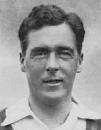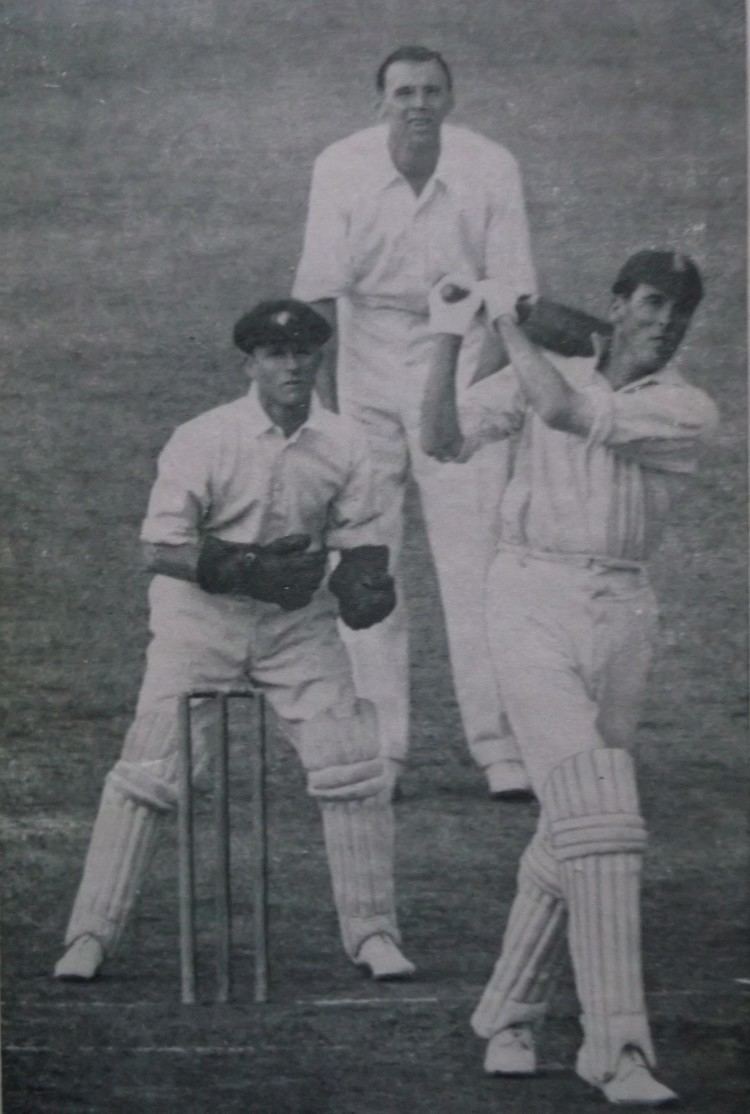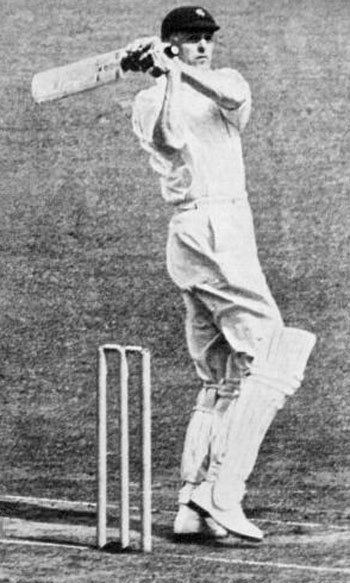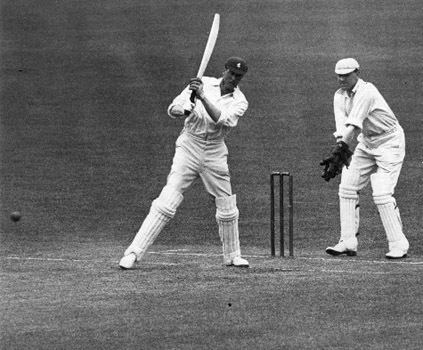Full name Frank Edward Woolley Role Cricket Player Name Frank Woolley | Batting style Left-handed | |
 | ||
Bowling style Left-arm mediumSlow left-arm orthodox Died October 18, 1978, Chester, Canada | ||
Frank woolley
Frank Edward Woolley (27 May 1887 – 18 October 1978) was an English first-class cricketer active 1906 to 1938 who played for Kent and England. He was born in Tonbridge and died in Chester, Nova Scotia. His elder brother was Claud Woolley of Northamptonshire.
Contents
- Frank woolley
- Australian Test Match Cricketers in Match Between NSW and MCC at Sydney Oval
- Early life and career development 18871906
- Cricket career 19061938
- Style and technique
- Later life 19391978
- References

A genuine all-rounder, Woolley was a left-handed batsman and a left arm bowler who varied his style between left-arm orthodox spin (SLA) and left arm medium pace (LM). He was an outstanding fielder close to the wicket, generally at first slip, and is the only player other than wicketkeepers to hold over 1,000 catches in a first-class career. He represented England in 64 Test matches from 1909 to 1934. Woolley is generally regarded as one of cricket's greatest-ever all-rounders. His first-class career runs total is the second highest of all time, after Jack Hobbs, and he scored the seventh highest number of career centuries. His career total of wickets taken is the 27th highest. He was a Wisden Cricketer of the Year in the 1911 edition.

Australian Test Match Cricketers in Match Between NSW and MCC at Sydney Oval
Early life and career development (1887–1906)

Born and bred in Tonbridge, Frank Woolley became interested in cricket at a very early age. His childhood home was his father's cycle and engineering shop at 72, High Street, which was only 100 yards from the Angel Ground, home of the local Tonbridge Cricket Club and an occasional venue for Kent County Cricket Club, most often for matches against Sussex. The house was later demolished for road widening, and replaced by what is now a Starbucks which has a blue plaque dedicated to Woolley on the wall facing Tonbridge's High Street. Like his Kent and England colleague Colin Blythe, Woolley is commemorated in Tonbridge Parish Church and has a road in North Tonbridge named after him. As a small boy, Frank would spend as much time as he could at the Angel. In 1897, when he was ten, the Angel became the base for the Tonbridge Nursery, a training centre for Kent's younger players until it closed in 1927.

Woolley's natural ability as both batsman and bowler attracted attention and, in 1903, he was engaged to take part in morning practice sessions at the Angel and in occasional matches. In 1904, aged 17, he became a regular member of the Tonbridge ground staff and, in that season and 1905, he made rapid progress which soon earned him recognition as an all-round prospect of exceptional promise. He played for Kent's Second XI against Surrey Second XI at The Oval in June 1905 and, although Kent lost, he took seven for 28 in Surrey's first innings.
Cricket career (1906–1938)
In May 1906, Woolley made his first appearance at Lord's, playing for Kent Second XI alongside his brother Claud against Middlesex Second XI. The Middlesex team included Patsy Hendren and Ernie Vogler. Kent lost but Woolley made a good impression by taking five for 82 and four for 68. He made his first-class début for Kent in 1906.
Style and technique
Writing for Barclay's World of Cricket, Harry Altham described Woolley as a "tall and graceful" figure who, with "a quiet air" was "unhurried in his movements". As a batsman, he had a gift for timing his shots and made full use of his long reach. He was especially strong in driving off his back foot against balls that other batsmen might consider good length deliveries. He was equally graceful as a bowler, making full use of his height to extract additional bounce from his deliveries. Altham pointed out that, although Woolley lacked the subtlety of Wilfred Rhodes, he was nevertheless a formidable bowler on any pitch whose conditions helped him. Woolley's long reach and his "large, prehensile hands" enabled him to take 1,018 catches, a total that remains a world record for non-wicketkeepers. Neville Cardus wrote that no other cricketer served "the meadow game" as happily and faithfully as Woolley.
Later life (1939–1978)
After his retirement, Woolley was elected a life member of both Kent and MCC. He sat on the Kent club committee. His wife died in 1961 but he remained active and, in January 1971, he flew to Australia to watch the last two Tests of the 1970–71 series and saw England, under Ray Illingworth, regain the Ashes. Nine months later, he moved to Canada where he remarried, his second wife being Mrs Martha Morse, an American widow.
